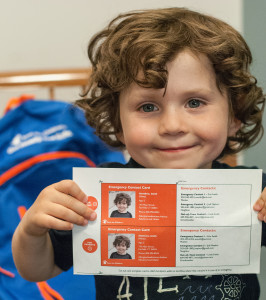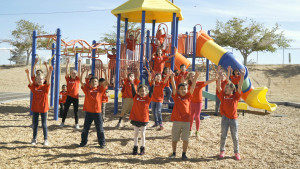Guest Post: Take Steps to Protect Your Kids this National Preparedness Month
The following is a guest post by Sarah Thompson, Associate Director, Community Preparedness for Save the Children.
Save the Children, which is responding to the historic floods in Louisiana and has served more than 1 million U.S. children affected by disaster since Hurricane Katrina struck 11 years ago, is urging families to take three basic “Prep Steps” this September – National Preparedness Month.
“We know that children are the most vulnerable when disaster strikes, but we also know what a difference basic preparedness actions can make for children,” said Erin Bradshaw, senior director of Save the Children’s Get Ready Get Safe initiative. “This National Preparedness Month, Save the Children urges all families to take three essential prep steps to keep kids safe and build their resiliency.”
Save the Children has also created “The Prep Step” song and dance to help children encourage their families to take these three basic prep steps, which are:
1) Make ICE contact cards for each child.
As kids return to school and child care, 69 million U.S. children are separated from their families daily. After Hurricane Katrina, there were more than 5,000 reports of missing children and it took seven months to reunite the last child with her family. Save the Children recommends creating an ICE, or In-Case-of-Emergency, card with basic health information and three emergency contacts. One contact should be out-of-state, since local phones, cell service and electricity can be unreliable during emergencies. ICE cards can be made quickly at no cost at www.SavetheChildren.org/ICE. Put one copy in your child’s bag or wallet and keep the other one with you.
2) Make a family emergency plan and practice it together.
Almost two-thirds (65%) of American families still don’t have an adequate emergency plan or any at all, according to a recent survey by the National Center for Disaster Preparedness, Columbia University. Practicing your family’s plan with your children will help them know what to do, stay calm and follow adult direction in the event of an emergency. While some parents fear that talking about emergencies will scare their children, discussing risks and how to prepare for them in an age-appropriate manner actually helps children feel more protected and builds their resiliency.
3) Gather disaster supplies and pack a go-bag for each child.
Don’t wait for a severe weather warning to get basic food, water, hygiene and safety items together. You’ll avoid long lines at the store and be better prepared – including for natural and manmade disasters that may occur with little-to-no warning. Creating a go-bag for each child helps ensure easy transport of essential medications, hygiene items and favorite activities in case of evacuation. Save the Children also recommends including a comfort item in each child’s bag. Help your children feel empowered by asking them to help decide what to pack.
To watch and learn “The Prep Step” song and dance and to link to resources to complete the three prep steps, go to www.SavetheChildren.org/PrepStep.
Images courtesy Save the Children.

